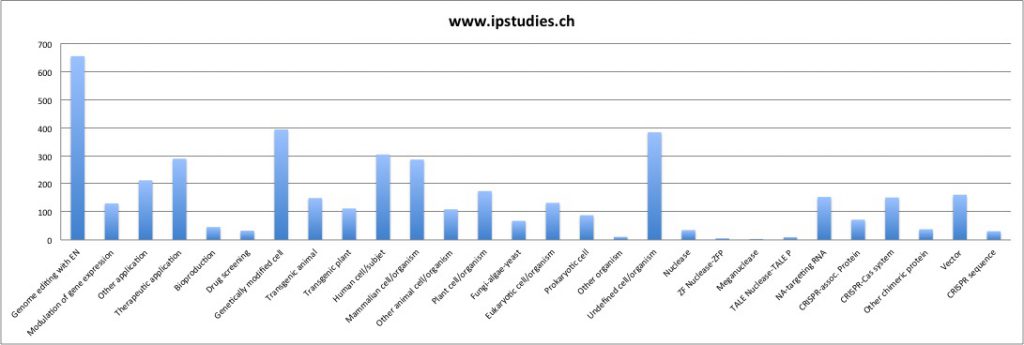From January to July 2016, our CRISPR patent monitoring set has almost doubled, from 489 to 787 published patent families. We now search, review and classify them on a monthly basis to stay up to date, watching for the latest technology coverage and application developments as can be derived from the individual patent claims.
Our updated CRISPR coverage analysis confirms the trends and facts we’ve reported in our detailed January 2016 patent landscape. We now also offer for sale the landscape report separately from the patent database to better serve the needs of customers who need to browse the big picture, including the licensing deals information, but do not need to dive into the R&D or legal data details, at least in a first stage.
We note that the pioneering patent licensing situation is still very confusing, with the costly legal battle between University of California and the Broad Institute still on-going at the USPTO while more oppositions have been filed by a diversity of players (some acting anonymously) at the European patent office against some of the recently granted patents.
Business is already one step beyond the core technology IP wars. We have spotted and classified almost 800 CRISPR-related patent families so far, each potentially claiming its own exclusive share of technology improvements, design-around attempts, and a myriad of specific application developments. Several patent applications have been identified as claiming the CRISPR system based on Cpf1, published last year. The shift from core technology IP development to applications-driven IP management is also confirmed by the evolution of the CRISPR licensing landscape, for which we have collected and reviewed so far more than 30 public announcements over the past two years. For instance, in the past six months, at least four exclusive licensing deals have been secured as applications of the CRISPR develop in fields as various as genetic diseases therapies, cell therapy for human muscle diseases, liver genetics, blood disorders, blindness and congenital diseases, livestock genetics, and non-human use such as agricultural applications.
The whole data is there, yet it is distributed in multiple patent offices and databases – at IPStudies, we search, retrieve, sort and classify this data set, down to the individual claims, to facilitate the CRISPR technology and competition watch for our customers. For more information on our patent landscape and patent monitoring services, check our CRISPR patent analytics offering, ask us for a video demo of our online monthly CRISPR patent monitoring database subscription, or send us any other inquiry you may have through our contact form.

